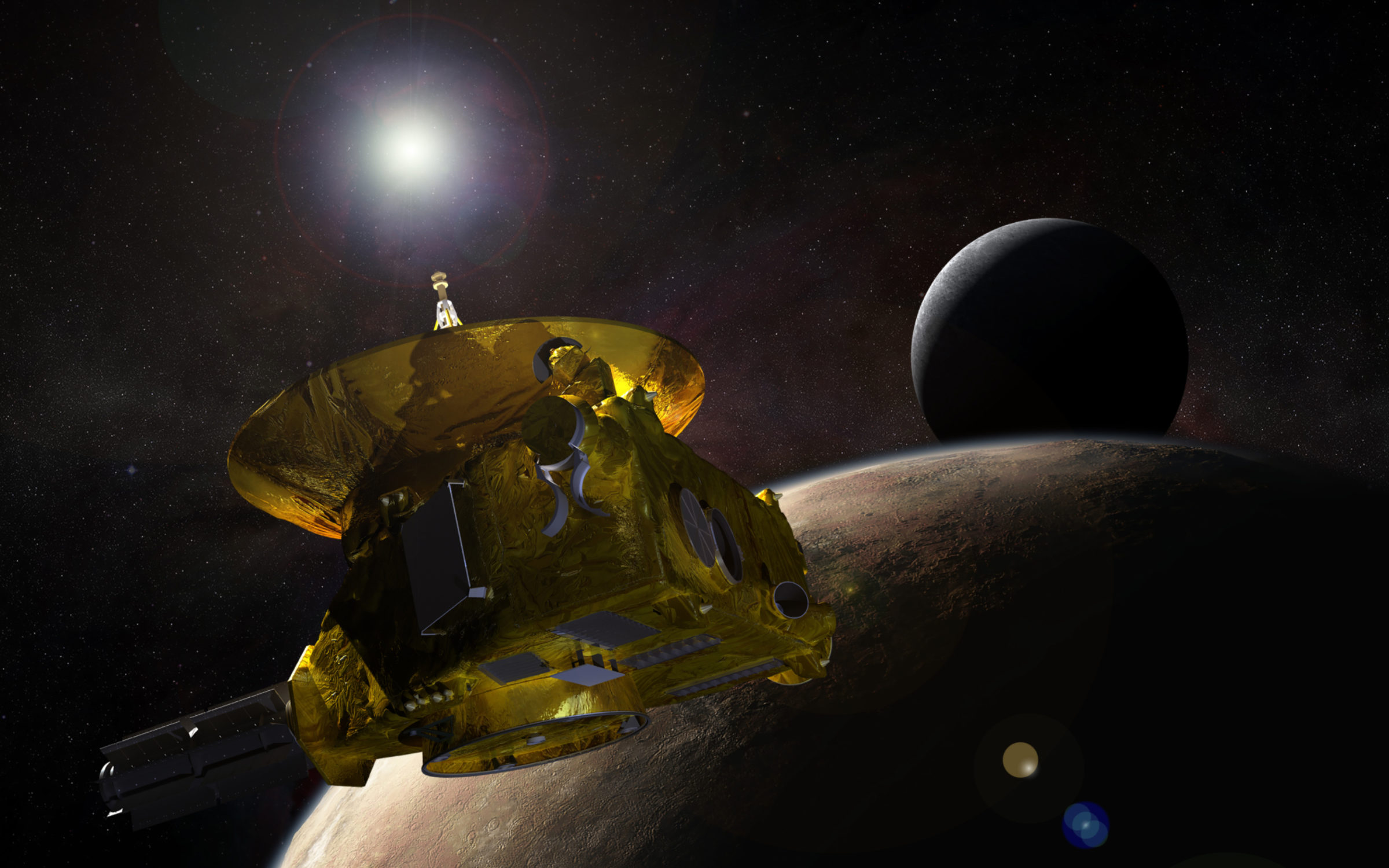What are competed planetary missions?
May the best science team win (hundreds of millions of dollars to build a spacecraft)

Written by
Casey Dreier
Chief of Space Policy, The Planetary Society
May 30, 2024
When The Planetary Society advocates for a balanced portfolio of planetary exploration missions at NASA, we frequently mention the importance of competed missions as part of that balance.
In essence, NASA releases funding opportunities every few years for new planetary missions, and various scientific teams submit ideas to compete for that mission funding; hence the moniker, competed missions.
Within NASA’s robotic planetary exploration program, there are two types of competed mission classes: Discovery and New Frontiers. Missions of these types are distinguished by their leadership structure — with a single scientist in charge of delivering the spacecraft — and the competitive process by which the project is chosen.

Competed missions historically cost less and fly more frequently than NASA’s high-profile flagship missions, which generally cost upwards of $2 billion and fly once per decade. NASA attempts to fly five Discovery-class missions and two New Frontiers missions every decade (congressional budgets permitting), with a $500 million cost cap on Discovery and a $900 million cost cap on New Frontiers. These cost caps are designed to limit NASA’s exposure to cost overruns, enabling more missions and allowing for more novel, higher-risk designs.
Also distinct is the political authority granted to NASA to pursue competed missions. Flagship missions represent the agency’s top scientific priorities, are assigned to a primary NASA center for implementation, and then must secure a funding commitment from the White House’s budgeting office and obtain a “new start” approval by Congress. Only then can NASA begin making long-term contracts and commitments necessary to build a large and complex spacecraft. In contrast, Discovery and New Frontiers missions are pre-authorized by Congress; NASA can select missions within those classes as frequently as funding allows. In theory, this provides more rapid development opportunities.
Competed planetary missions are science-focused and scientist-led. This is again distinct from flagship-class missions, which, while science-focused, are led by an existing NASA center. Competed missions are led by Principal Investigators (PIs) who assemble both a science and engineering team to submit a detailed proposal to the space agency for the type of mission they’d like to pursue. The scientific payload and team are proposed wholistically by the very individuals who will then implement the mission. This elevates scientific leadership to the top of the decision-making process and generally leads to a more copacetic (albeit smaller) science team.

The planetary science decadal survey provides guidelines for the launch rates of competed missions and for science investigations for the more expensive New Frontiers missions. Discovery missions consider any high-priority scientific question within the Solar System.
The lower costs, higher flight rate, and empowered scientific management of competed missions provide value back to NASA, the scientific community, and the public. They provide opportunities for scientists to assemble and manage tightly focused investigations and to gain a better understanding of the spacecraft development process. Delays and overruns are less serious than similar problems in flagship missions due to the smaller overall project budget, protecting the space agency’s other projects and the taxpayer. It also enables a more dynamic, responsive space agency that can marshal new missions to address new discoveries or scout out new locations in advance of larger missions in the future.
| Feature | Competed Missions | Flagship Missions |
|---|---|---|
| Selection Process | Selected through a competition with an Announcement of Opportunity (AO) | Directed by NASA HQ to specific NASA center |
| Leadership | Principal Investigators (PIs) | NASA center management |
| Cost | Fixed in advance, between $500 - $900 million (not including launch and operations) | More than $2 billion |
| Objectives | Focus on specific science goals with tightly related objectives | Conduct a broad suite of objectives, often evolving with mission progress |
| Complexity | Generally simpler with fewer, flight-proven, smaller instruments | Generally more and more complex, with new types of highly specialized instruments |
| Duration | Typically shorter primary missions | Longer mission durations that can last a decade or more |
| Locations | Travel to more accessible or benign environments | Travel to challenging or hard-to-reach destinations |
Examples of Discovery missions are MESSENGER, Mars Pathfinder, and Psyche; New Frontiers missions of note are Juno, OSIRIS-REx, and New Horizons. Flagship missions are much larger, such as the Perseverance rover and Europa Clipper.
By ensuring a regular cadence of competed missions, NASA supports an independent scientific community, novel approaches to scientific exploration, and a broader swath of the aerospace industry and workforce by ensuring regular work to build and maintain expertise.
Read More:
NASA’S Discovery Program: The First Twenty Years of Competitive Planetary Exploration (NASA History Office e-book, 2024)
Large Strategic NASA Science Missions: Science Value and Role in a Balanced Portfolio (National Academies report, 2017)
Transforming solar system exploration: The origins of the Discovery Program, 1989 - 1993 (refereed journal article, 2013)
Support our core enterprises
Your gift today will go far to help us close out the year strong and keep up our momentum in 2026.
Donate

 Explore Worlds
Explore Worlds Find Life
Find Life Defend Earth
Defend Earth

